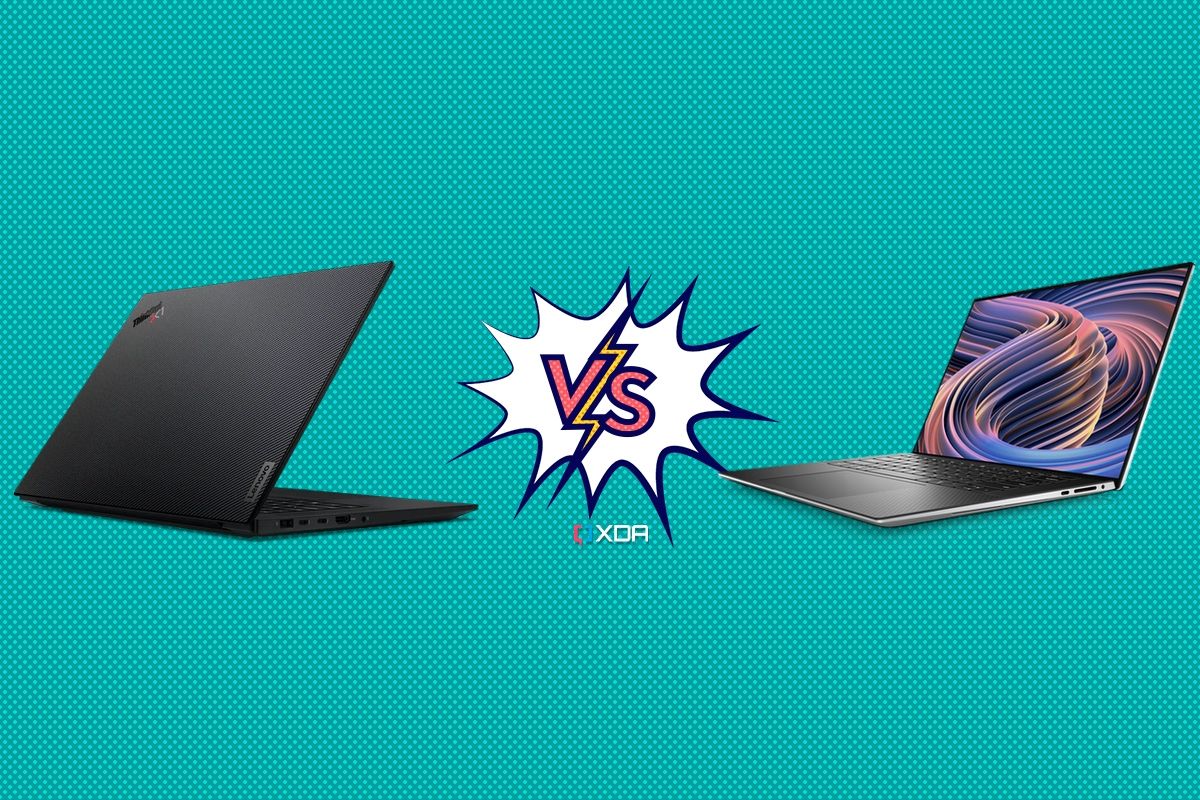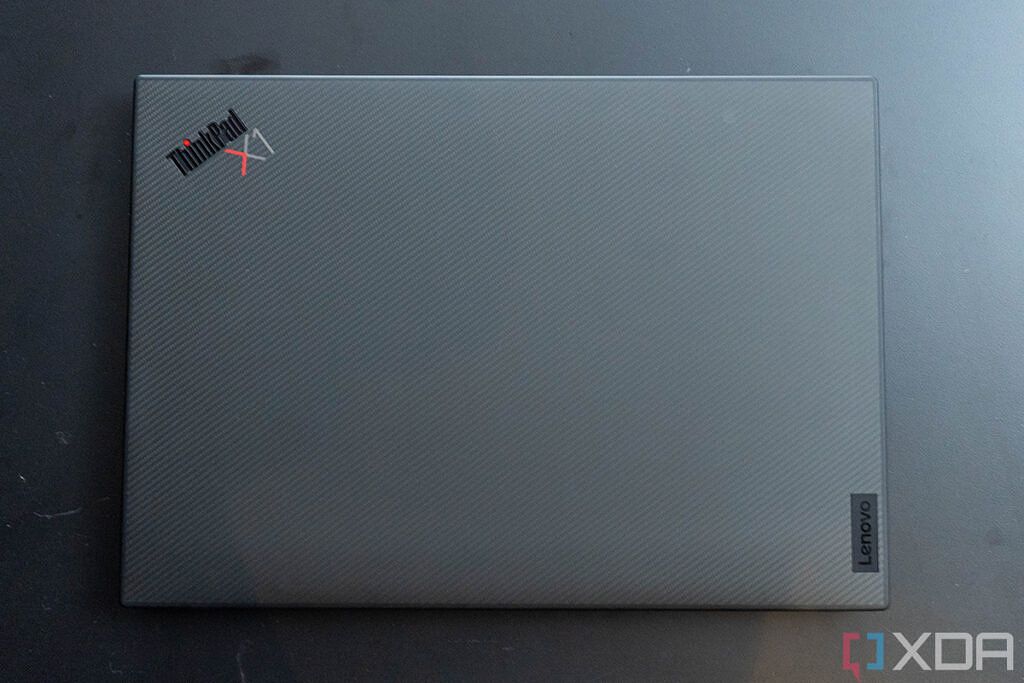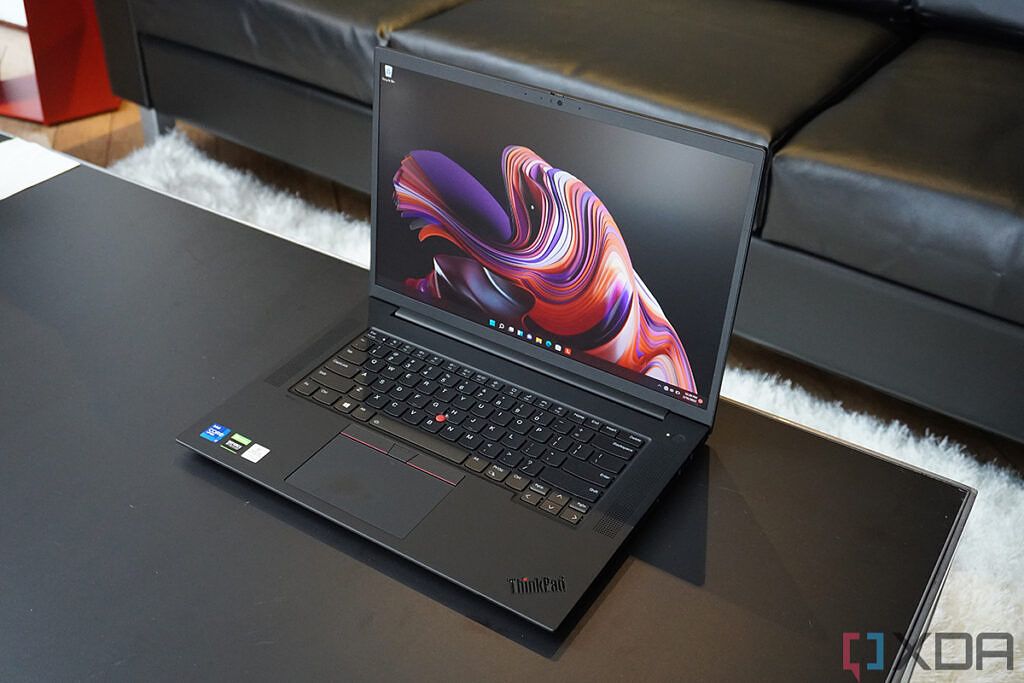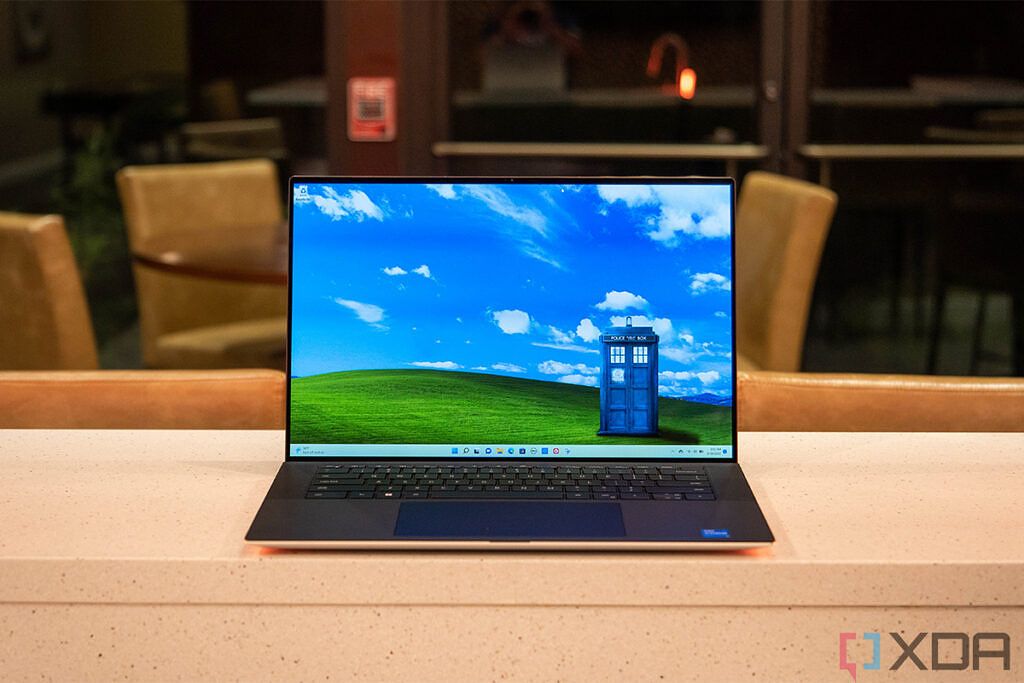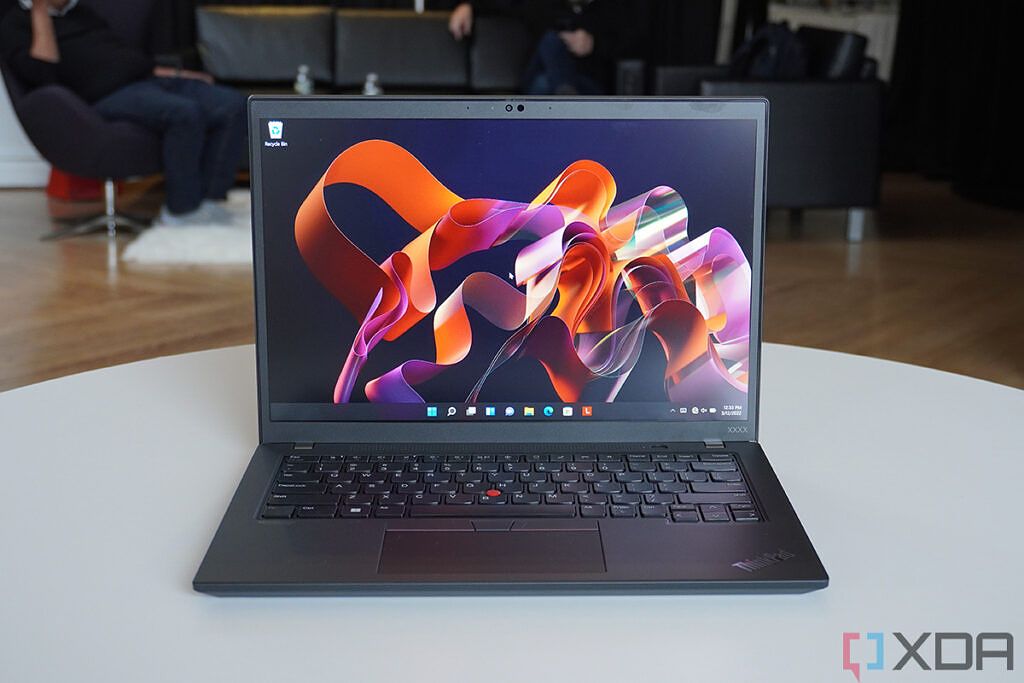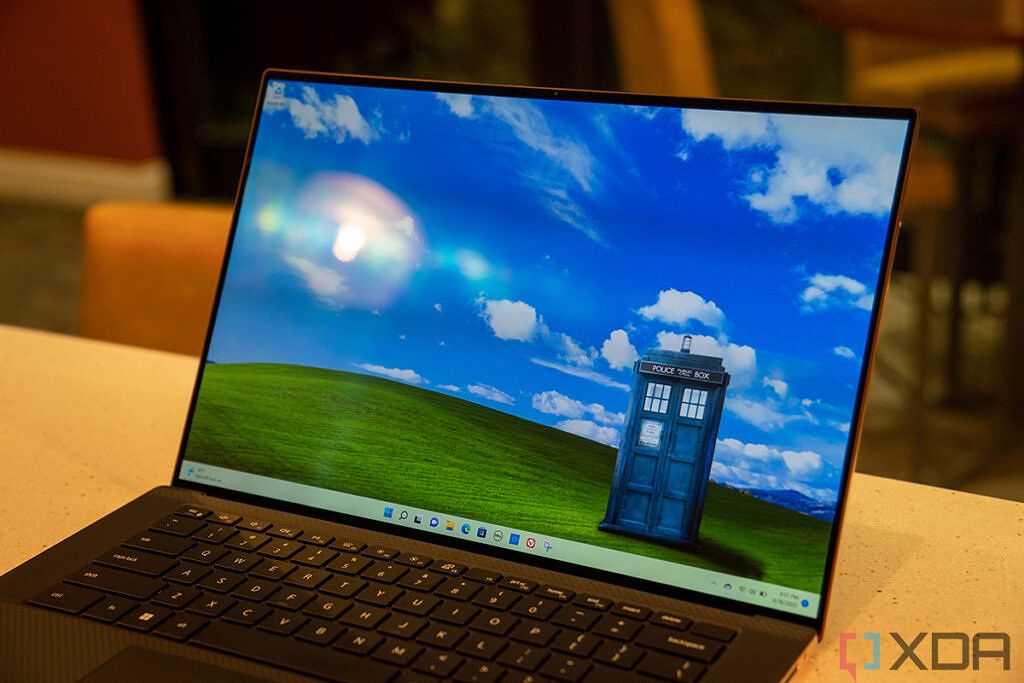Quick Links
In 2022, there's been no shortage of great laptops being launched, which is generally a good thing. But with so many choices out on the market, it can be hard to choose the one that's just right for you. If you're looking for a powerful work laptop that's still somewhat portable, you've likely come across options like the Dell XPS 15 and the Lenovo ThinkPad X1 Extreme Gen 5. Both of these are great, but if you're having trouble picking one or the other, we're here to help.
In this article, we will compare the 2022 edition of the Dell XPS 15 to the Lenovo ThinkPad X1 Extreme Gen 5. There are quite a few differences, but a very notable one we need to mention right off the bat is price, with Lenovo's laptop being significantly more expensive across the board. It's also a business laptop, and those tend to be a bit more expensive considering the specs alone. Still, there are merits to both of these machines.
-
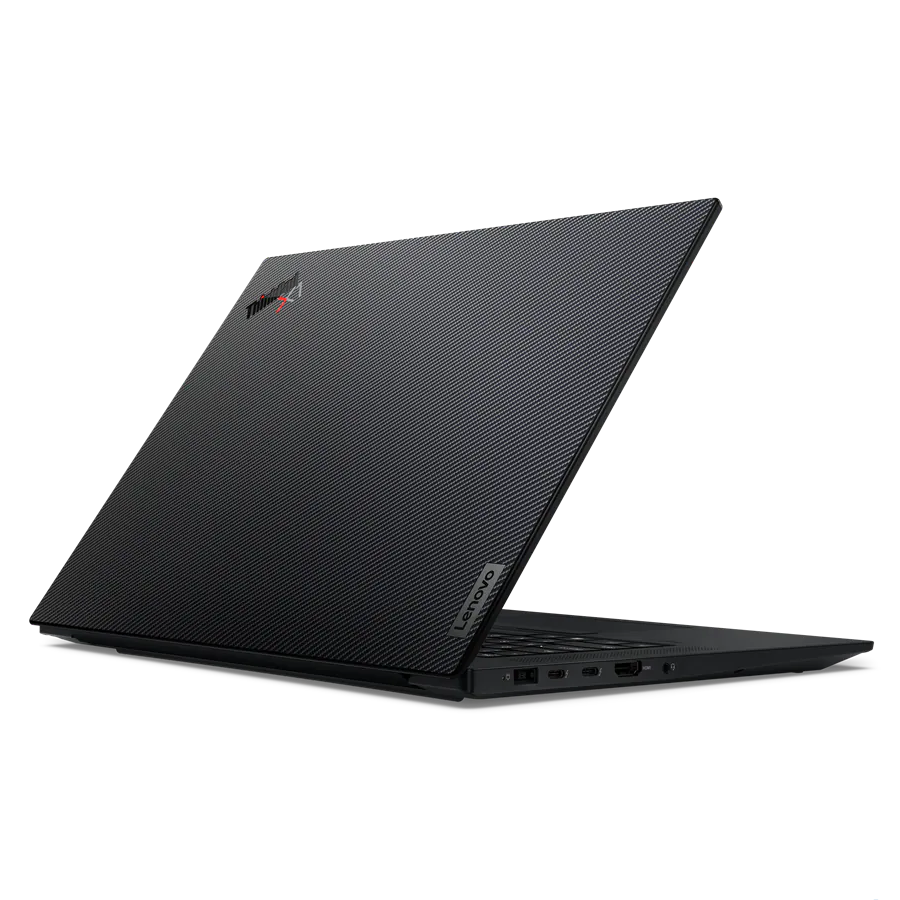
Lenovo ThinkPad X1 Extreme Gen 5
The Lenovo ThinkPad X1 Extreme Gen 5 is a powerful business laptop with Intel H-series processors and NVIDIA RTX graphics to handle the most demanding workloads.
-
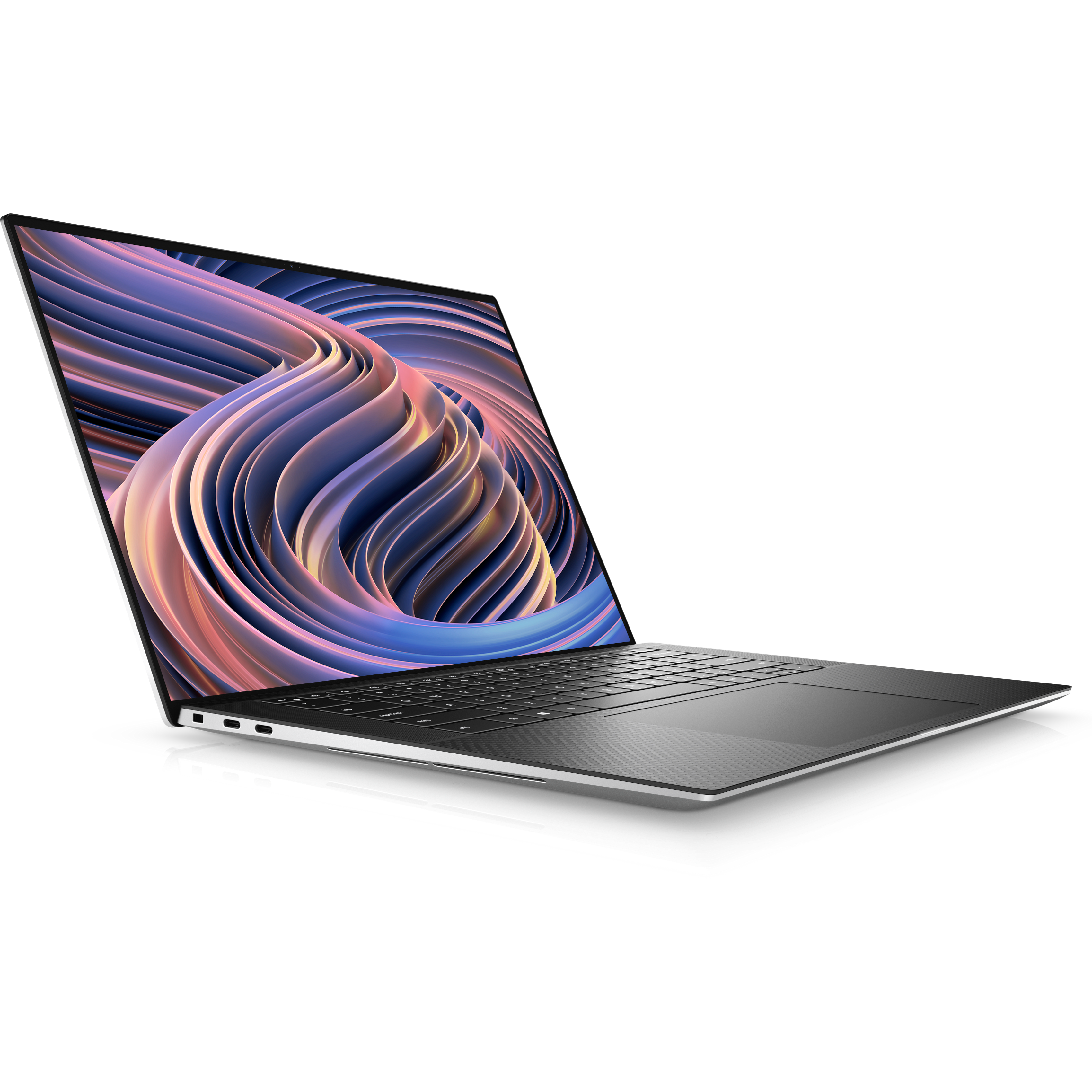
Dell XPS 15 (2022)
The Dell XPS 15 for 2022 packs 12th-generation Intel Core processors and optional Nvidia graphics. It also comes with an optional OLED display.
Lenovo ThinkPad X1 Extreme Gen 5 vs Dell XPS 15 (2022: Pricing and availability
Both the Lenovo ThinkPad X1 Extreme Gen 5 and the Dell XPS 15 are currently available to buy, both having launched in mid-2022. The Lenovo ThinkPad X1 Extreme is available from Lenovo directly, as well as other resellers, including Best Buy. Pricing varies a lot, but at writing time, it starts at $1,777.40 on Lenovo's website.
The Dell XPS 15 (2022) is also available at multiple retailers, including Best Buy, Amazon, and Dell itself. It's a more consumer-oriented product than Lenovo's laptop, so it's easier to find at traditional retailers. Pricing starts at $1,249.99 and goes up from there based on your configuration.
Lenovo ThinkPad X1 Extreme Gen 5 vs Dell XPS 15: Specs
|
Lenovo ThinkPad X1 Extreme Gen 5 |
Dell XPS 15 (2022) |
|
|---|---|---|
|
Operating system |
|
|
|
CPU |
|
|
|
Graphics |
|
|
|
Display |
|
|
|
Storage |
|
|
|
RAM |
|
|
|
Battery |
|
|
|
Ports |
|
|
|
Audio |
|
|
|
Camera |
|
|
|
Windows Hello |
|
|
|
Connectivity |
|
|
|
Color |
|
|
|
Size (WxDxH) |
359.5 × 253.8 × 17.9 mm (15.57 × 10 × 0.7 inches) |
|
|
Weight |
4.14 pounds (1.87kg) |
|
|
Price |
Starting at $2,049 |
Starting at $1,449 |
Design: Two very different approaches
We're going to start with the most noticeable differences. The design of these two laptops is radically different, and it might play a huge part in your decision. Starting with the more technical stuff, the Lenovo ThinkPad X1 Extreme is somewhat larger since it has a bigger screen, but it is thinner (17.9mm) and has a lower starting weight (4.14 pounds) compared to the Dell XPS 15, which starts at 18.54mm and 4.22 pounds. Of course, the ThinkPad is likely to get a lot heavier with GPU upgrades, so that's something to keep in mind.
The bigger deciding factor is a bit more subjective, and that's looks. The Lenovo ThinkPad X1 Extreme is everything you'd expect from a ThinkPad - black chassis, red accents, and features like the red TrackPoint are all here. If you're into this classic look, your mind may already be set. Some models come with a carbon fiber weave pattern on the lid, which can give the laptop a more unique look.
On the other hand, the Dell XPS 15 is a much more modern-feeling laptop. It comes in two color options to choose from. One has a darker shade of silver (called Platinum silver) mixed with a black carbon fiber interior. The other one has a lighter silver shade on the outside (called Frost), and the inside uses a white woven fiberglass composite material. Both models come with an interesting dual-tone look that makes them much more unique. Personally, I'm more partial to the white interior, but both options are great. The Dell XPS 15 also feels a bit more premium with the display being covered by glass instead of plastic.
Performance: You can go further with the ThinkPad X1 Extreme
At first glance, the Lenovo ThinkPad X1 Extreme Gen 5 and the Dell XPS 15 have a lot in common in terms of specs. Both are powered by 12th-generation Intel Core H-series processors, and both have discrete Nvidia graphics. However, there are some differences. For one thing, the Dell XPS 15 starts with an Intel Core i5-12500H, while the ThinkPad X1 Extreme lives up to its name with a Core i7-12700H in the base configuration. That also helps explain the difference in starting price. Otherwise, though, these laptops have similar processors, so you must also consider the cooling capabilities. Based on our testing of these two laptops, the same CPU performed a bit better on the ThinkPad X1 Extreme Gen 5, especially in a demanding workload like Cinebench R23.
|
Dell XPS 15 Intel Core i7-12700H |
Lenovo ThinkPad X1 Extreme Gen 5 Intel Core i7-12700H |
|
|---|---|---|
|
Geekbench 5 |
1,774 / 11,580 |
1,766 / 12,722 |
|
Cinebench R23 |
1,797 / 11,695 |
1,805 / 15,312 |
The differences start to show up with the GPU, however. The Dell XPS 15 comes with integrated Intel graphics at the base level, but you can upgrade to either an Nvidia GeForce RTX 3050 or 3050 Ti, both with 4GB of video memory. These GPUs are limited to 40W of power, which is necessary to keep the laptop as compact as it is.
Based on our testing of these two laptops, the same CPU performed a bit better on the ThinkPad X1 Extreme Gen 5, especially in a demanding workload.
On the other hand, the Lenovo ThinkPad X1 Carbon starts with an Nvidia GeForce RTX 3050 Ti, and it can go all the way up to an Nvidia GeForce RTX 3080 Ti. This is a huge difference across the board if you need GPU power. The GeForce RTX 3080 Ti has a lot more cores and memory, and it's just immensely faster. We didn't get to test the top-tier model, but our review unit featured a GeForce RTX 3060, and comparing that to the RTX 3050 Ti in the Dell XPS 15 shows a big difference in performance that will only get bigger if you choose a more expensive GPU.
|
Dell XPS 15 Intel Core i7-12700H, GeForce RTX 3050 Ti |
Lenovo ThinkPad X1 Extreme Intel Core i7-12700H, GeForce RTX 3060 |
|
|---|---|---|
|
3DMark Time Spy |
4,535 |
7,430 |
|
3DMark Time Spy Extreme |
2,250 |
3,522 |
Of course, that comes at a cost, which is power consumption. With a more powerful GPU, the Lenovo ThinkPad X1 Extreme will chew through its battery much more quickly, especially with more intensive workloads. It has a slightly larger 90Whr battery compared to the 86Whr unit of the Dell XPS 13, but if you opt for a more powerful GPU, you'll still feel the battery drain more quickly.
As for storage and RAM, the two laptops are similar. Both come with up to 64GB of RAM. For storage, the Lenovo ThinkPad X1 Extreme can go up to 8TB, while the Dell XPS 15 maxes out at 4TB. However, the only way to get 8TB on the ThinkPad is to stick with RTX 3050 Ti graphics; otherwise, you're also limited to 4TB.
Display: The Dell XPS 15 has OLED
Generally speaking, these two laptops aren't too different in regards to the display. However, each offers at least one unique configuration that may make it better for you. The Dell XPS 15 comes with a 15.6-inch panel and a 16:10 aspect ratio, which is fantastic for productivity. The base model comes with a Full HD+ (1920 x 1200) IPS panel, but you can go all the way to an Ultra HD+ (3840 x 2400) panel with 100% coverage of Adobe RGB if you're into creative work. The real standout, however, is the 3.5K (3456 x 2160) OLED panel, which is not only very sharp but also has the usual benefits of OLED, like true blacks and a high contrast ratio. Both the OLED and the Ultra HD+ panel options also support touch.
On the other hand, the Lenovo ThinkPad X1 Extreme has a slightly larger 16-inch panel, keeping the same 16:10 aspect ratio. It also has a similar base configuration in Full HD+, and a maximum configuration that's Ultra HD+ with optional touch support. However, the mid-tier option here is a Quad HD+ (2560 x 1600) panel with a 165Hz refresh rate. This opens the door for some more serious gaming, making use of the powerful GPU options we mentioned above. There's no OLED here, but if you do want to play games in your free time, the ThinkPad X1 Extreme may be a bit more suited to that hobby.
Perhaps a more important distinction is what's above that display, though. Dell has infamously stuck with 720p webcams for its laptops, even as most of its competitors are upgrading to 1080p with their 2022 laptops. That includes Lenovo, which offers a 1080p camera on the ThinkPad X1 Extreme as the default configuration. If you want to look your best during meetings or video calls, that's the laptop to go for. Both laptops support Windows Hello facial and fingerprint recognition, so that shouldn't be a problem either way.
The Dell XPS 15 has a quad-speaker stereo system.
In terms of audio, the Dell XPS 15 is the best of the two. It has a quad-speaker stereo system and it's very well-known for having some of the best speakers on any Windows laptop, so you can't go wrong with it. The ThinkPad X1 Extreme has dual speakers and it should be fine for calls or watching videos, but the Dell XPS 15 is going to be more immersive.
Ports and connectivity: The ThinkPad X1 Extreme really shines here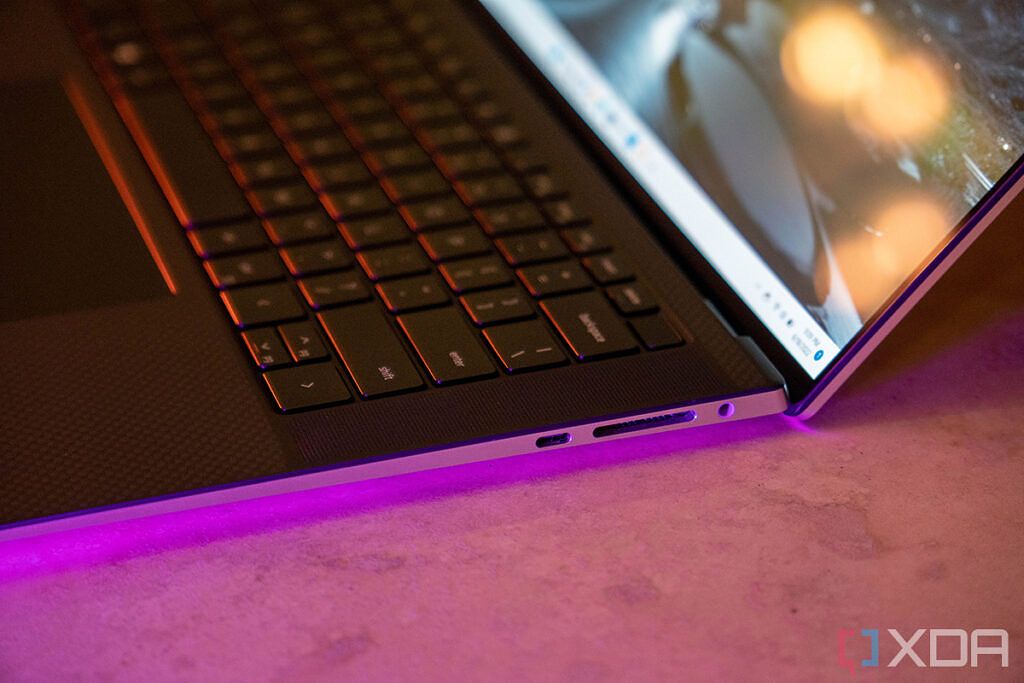
Rounding things out with ports, this is one area where the Lenovo ThinkPad X1 Extreme absolutely dominates. Business laptops almost always have great connectivity, and that's certainly the case here. You get two Thunderbolt 4 ports, two USB Type-A ports, HDMI 2.1, a headphone jack, and an SD card reader. That's plenty of connectivity on top of already having versatile Thunderbolt ports.
Dell's XPS laptops are basically on the opposite end of the spectrum here. The company has been reducing the number of ports for some time, and this model includes two Thunderbolt ports, one regular USB Type-C port, a 3.5mm headphone jack, and an SD card reader. Dell also ships an adapter from USB Type-C to HDMI and USB Type-A in the box, but it's not the most convenient approach from a user perspective. You may have to rely on a Thunderbolt dock or USB-C hub if you want more ports.
You can configure the ThinkPad X1 Extreme with cellular network support.
On the wireless front, both laptops naturally support Wi-Fi and Bluetooth. Oddly enough, Dell doesn't mention support for Wi-Fi 6E on the XPS 15, so that's a potential advantage for the ThinkPad. Another major advantage for Lenovo is that since this is a business laptop, you can configure the ThinkPad X1 Extreme with cellular network support, specifically with 5G powered by a Fibocom modem. That means you can stay connected to the internet anywhere, which is great if you can't afford to be away from your work.
Lenovo ThinkPad X1 Extreme vs Dell XPS 15 (2022): Final thoughts
As with anything, whether you prefer one laptop or another is up to your personal needs. There are valid reasons to prefer either one here. The ThinkPad X1 Extreme is a more powerful laptop, particularly in terms of the GPU. Plus, it has a high refresh rate display option if you want to get into gaming and other great panel choices. A better webcam also makes it especially recommended for work, and the wide variety of ports makes it much more convenient.
On the other hand, the Dell XPS 15 has a much more modern and interesting design (though that's admittedly a subjective matter). It also gives you the option for that stunning 3.5K OLED display, so it's fantastic if you're watching a lot of content or working in media. That's also helped by the fantastic speaker system. It does have some big downsides, like the below-average webcam and the short supply of ports, but if you don't need those features, it has some positives.
Perhaps most importantly, the Dell XPS 15 is noticeably cheaper, though that difference becomes less noticeable if you match up the specs on both laptops. Still, you can save some money if you don't need the insane performance of the ThinkPad X1 Extreme, and get a nicer-looking package to boot.
Personally speaking, I'd probably choose the Dell XPS 15, given that I don't need that kind of power, and I'd rather save some money. I do have a docking station and webcam to work around its shortcomings, though, so I don't need the features Lenovo offers.
Whether you feel the same or not, you can buy either of these laptops using the links below. If neither of them is speaking to you, you can check out the best Lenovo laptops and the best Dell laptops available right now to see a few more options from each of these companies.
-

Lenovo ThinkPad X1 Extreme Gen 5
The Lenovo ThinkPad X1 Extreme Gen 5 is a powerful business laptop with Intel H-series processors and NVIDIA RTX graphics to handle the most demanding workloads.
-

Dell XPS 15 (2022)
The Dell XPS 15 for 2022 packs 12th-generation Intel Core processors and optional Nvidia graphics. It also comes with an optional OLED display.

